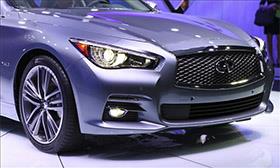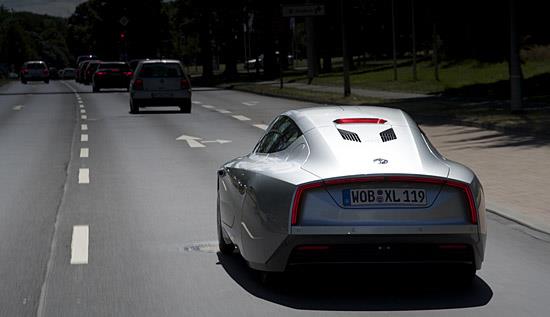Switching from mechanical to electrical technology isn't a bad thing for people who love to drive. It's making driving easier and more fuel efficient.
 Even though some car enthusiasts lament the creep of technology into cars, electronics replacing mechanical parts are nothing new. Think of power steering and how it has helped made driving easier and safer for decades.
Even though some car enthusiasts lament the creep of technology into cars, electronics replacing mechanical parts are nothing new. Think of power steering and how it has helped made driving easier and safer for decades.
More recently, electric power steering that uses electric motors to assist driver input instead of a hydraulic pump, as with earlier systems, has become common. EPS also saves fuel, because it runs independently of the engine's power and allows for start-stop systems that shut off the engine at traffic lights.
But regardless of whether power steering was hydraulically or electrically assisted, drivers continued to have a direct mechanical connection to the front wheels. That is, until the first "steering-by-wire" system was recently introduced on a production vehicle, the 2014 Infiniti Q50.
This means that the mechanical linkage connecting the front wheels to the steering wheels has been replaced with electronics. The advantages of steering-by-wire systems include advancements in stability control and that the steering ratio can be infinitely varied.
But such arrangements also mean that there's no physical feedback or tactile "steering feel" for the driver, which is anathema to enthusiasts. Some complain that electronics are more prone to failure, although a fail-safe system on the Infiniti Q50 relies on a good ol' mechanical linkage if that happens. And remember the last time you flew on a commercial airline? The pilots were using steering-by-wire to control the plane.
Such systems likely are just the beginning of electronics replacing critical mechanical functions and parts on cars, and in a more obvious fashion than steering-by-wire.
For example, Tesla wasn’t able to completely eliminate the door handles on the Model S for improved aerodynamics on the all-electric luxury sedan. Instead, the handles are flush with the body and pop out only when the driver approaches with the key. But Tesla does want to ditch the side mirrors on the Model X crossover that it plans to launch late next year.

The original Model X concept had cameras built into the doors that fed video displays inside the car. Tesla said that removing the side mirrors would reduce wind resistance and therefore increase efficiency and battery range. But the idea doesn’t adhere to the Federal Motor Vehicle Safety Standard 111 regulating rearview mirrors on cars.
When the Model X appeared at the Detroit Auto Show in January of this year, traditional side mirrors had replaced the cameras. But Tesla’s head designer, Franz von Holzhausen, recently said that the company is "still in talks with authorities to get the necessary permissions" to replace the side mirrors with cameras.
This isn’t an original idea, of course, or the first time technology from an automaker has gotten out ahead of the National Highway Transportation Safety Administration, which oversees automotive safety regulations. Audi’s R8 e-tron supercar concept included a 7.7-inch widescreen LED in place of the traditional glass rearview mirror.

The LED displays images from an always-on, wide-angle camera in a heated mount in the rear bumper. Audi used a special LED created by Samsung that provides a wider viewing angle than a traditional mirror does, and it doesn't need a backlight, so uses less power. Audi adapted the digital rearview mirror from its LeMans-winning R18 e-tron prototype.
Volkswagen also got rid of the side mirrors on the XL1, an ultra-efficient diesel-hybrid supercar that debuted at this year’s Geneva Auto Show and replaced them with two door-mounted cameras a lá Tesla. A writer for Automotive News drove the XL1 around VW's hometown of Wolfsburg, Germany, and reported that "relying on cameras was unsettling at first, but it worked fine" and pointed out "how useful night-vision side mirrors could be."

While some auto enthusiasts almost reflexively decry the advance of technology such as drive-by-wire and driver assist systems that take over in case of an accident, the majority of car owners embrace electronics if such systems make their time behind the wheel safer and easier.
Plus, you can't stop progress -- and in my opinion, that's a good thing. Otherwise, we'd still be wrestling with non-assisted steering.
Doug Newcomb has been covering car technology for more than 20 years for outlets ranging from Rolling Stone to Edmunds.com. In 2008, he published his first book, "Car Audio for Dummies" (Wiley). He lives and drives in Hood River, Ore., with his wife and two kids, who share his passion for cars and car technology, especially driving and listening to music.
No comments:
Post a Comment